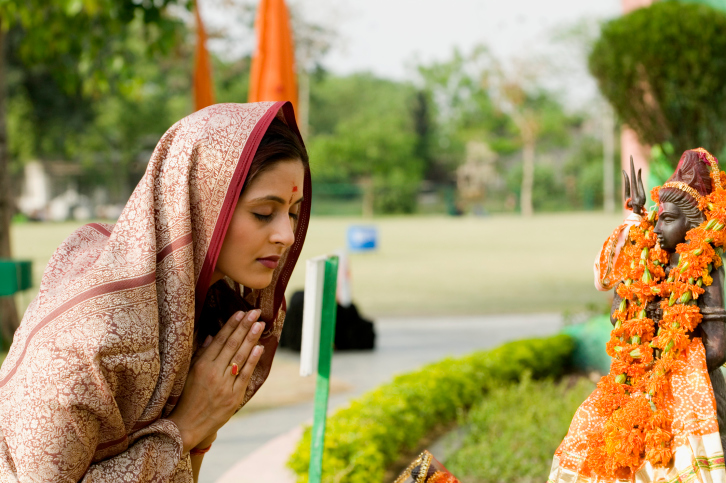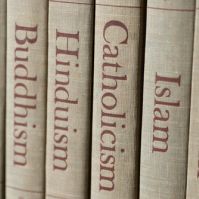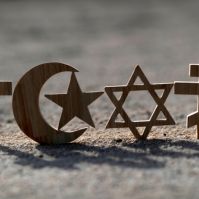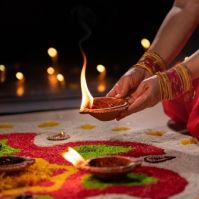 More Americans than ever before are indicating that "none" is their religion of choice. While some 24 percent of the country is Catholic, the non-believers are not far behind at 23 percent of the nation's citizens. Church attendance is also at a record low, with more than one-third of all people in the country reporting that they never go to a worship service of any kind.
More Americans than ever before are indicating that "none" is their religion of choice. While some 24 percent of the country is Catholic, the non-believers are not far behind at 23 percent of the nation's citizens. Church attendance is also at a record low, with more than one-third of all people in the country reporting that they never go to a worship service of any kind.
An example of bridging religions and religious tolerance and coexistence out of the past shows how three religious groups that came to America with immigrants from India over a century ago found ways to work together, bridging religions when they arrived. The small Sikh community created a church in a Northern California town, and the Hindu and Muslim communities shared it with them in an unusual example of cooperation between followers of the three faiths.
Coexist
In Northern California a century ago, Sikhs, Hindus and Muslims all came from India seeking a new life in America. Each of the groups was small in the larger population, but each had fervent believers who brought their cultures and beliefs with them when they moved to this country.
In India, the three religions occupy distinctly different public spaces and are sometimes at odds with one another. In Stockton, California in the early 1900s, they saw the benefit of sharing worship space and celebrating cultural events that reminded them all of home.
Sikh Majority Within the Ethnic Minority
Approximately two-thirds of the Indian immigrants in the area at the turn of the last century were Sikh. The relative strength of their community gave them the ability to gather the resources needed to build a worship center, called a gurdwara, in Stockton in 1911.
Other migrants from India who were Muslim and Hindu did not have the clout to secure a location in the city and build a location for their own worship, so they shared space at the gurdwara. Members of the three disparate faiths came together to benefit from a meeting place in which to build ties among the community.
Strength of Community
While non-Sikhs were not permitted to hold leadership positions at the center, both Hindus and Muslims had worship services and other gatherings to strengthen the membership. Despite their different faiths, the three groups shared a powerful bond in their connection to their home country.
Hosting visiting dignitaries and lecturers from the different faiths, the gurdwara also served as a link to India and the distant culture that they had left behind in coming to America. The growing nationalist movement in India was a cause that united the members of the religions as well.
Sharing the space on special occasions such as Indian cultural holidays, the Muslims and Hindus benefitted from the relative strength of the Sikh presence in the city. Together, the three different faiths built upon the things that they had in common to build their presence as a community of people with more commonalities than differences between them.
Falling Away but Remembering to Pray
Data from a new study show that Americans in general are less likely to affiliate with an organized religion or to attend weekly worship services than in the recent past; however, a solid majority of the country reports that they still pray:
- More than one in three Americans, nearly 35 percent, never attend church
- Almost a quarter, 23 percent of the country, claim "none" as their religion
- By comparison to "none," those who affiliate with the Catholic Church constitute 24 percent of the nation
- Only one out of every six people, or 17 percent, report that they never pray
Every year the National Science Foundation sponsors the exhaustive study of some sociological trends in the country. More Americans are discovering that spirituality is a personal matter that does not require an organized house of worship to hold religious beliefs, which had been more prevalent in the past.



